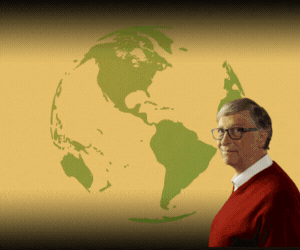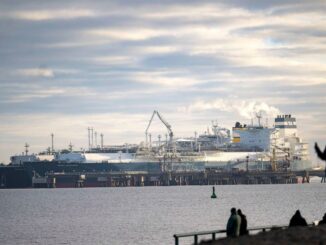
Germany’s ambitious push toward renewable energy has long been hailed as a model for the world, but recent developments underscore the vulnerabilities inherent in relying heavily on weather-dependent sources like wind and solar. Just days into November 2025, wind power generation in the country is forecasted to plummet to its lowest level in a year, a stark contrast to the record-breaking output seen in October.
This rollercoaster highlights a critical lesson: true energy security begins with domestic stability, not intermittent highs and lows that leave grids—and economies—exposed.
Bruce Willis in the movie “The Last Boy Scout” had a great line. “The sky’s blue, water is wet, and women have secrets”. We could change that to an Energy Security quote: “Wind Blows Sometimes and Net Zero equals deindustrialization and fiscal collapse”.

The Winds of Change: From Record Highs to Alarming Lows
According to Bloomberg models, German wind generation is set to drop dramatically starting Friday, persisting into the following week due to a high-pressure system that will suppress both wind and solar production. On Sunday alone, output is expected to fall to around 1.2 gigawatts—roughly one-tenth of the year’s average so far. This comes on the heels of October’s unprecedented highs, where favorable weather conditions drove wind power to new records. As meteorologist Andrew Pedrini from Atmospheric G2 noted, “High-pressure conditions will suppress both wind and solar production,” illustrating how quickly fortunes can shift in a renewables-heavy system.
This variability isn’t just a meteorological curiosity; it’s a systemic risk. Germany’s energy mix, with its aggressive phase-out of nuclear and coal in favor of renewables, leaves the grid susceptible to such fluctuations. When the wind doesn’t blow and the sun doesn’t shine, the country must scramble for alternatives—often importing expensive power or ramping up gas-fired plants. This inconsistency not only strains infrastructure but also drives up costs for consumers and industries alike.
Germany’s 2025 Electricity Energy Mix Summary
Germany’s energy mix in 2025 refers primarily to its electricity generation sources, as this is the focus of most available data and projections amid the ongoing Energiewende (energy transition). As of November 2025, full-year data is not yet finalized, but year-to-date and rolling 12-month figures (e.g., September 2024–August 2025) provide a reliable estimate. Renewables have continued to dominate, though weather variability (e.g., low wind in early 2025) led to temporary increases in fossil fuel use.
Based on recent analyses, Germany’s electricity generation mix for 2025 is approximately as follows:
|
Source
|
Approximate Share (%)
|
Key Notes
|
|---|---|---|
|
Wind
|
28
|
Primarily onshore; output dipped early in the year due to low winds but recovered in Q2-Q3.
|
|
Solar
|
16-17
|
Strong growth, with record highs in Q2 due to sunny weather; up ~20% year-over-year in H1.
|
|
Biofuels/Biomass
|
10
|
Stable contribution from biomass and waste.
|
|
Hydropower
|
10
|
Declined ~15% in H1 due to dry conditions.
|
|
Total Renewables/Low-Carbon
|
62-65
|
Fluctuated quarterly: ~47% in Q1 (wind shortfall), ~68% in Q2 (solar surge); overall upward trend from 54-57% in 2024.
No nuclear since phase-out in 2023. |
|
Coal (Hard Coal + Lignite)
|
23-25
|
Increased ~3-16% in H1 to offset renewables dips; lignite ~13% in Q2, but overall declining long-term.
|
|
Natural Gas
|
~10
|
Rose 20% in H1 due to higher demand and prices, but down in Q2 (9%) amid renewable gains.
iea.blob.core.windows.net
|
|
Other (e.g., Oil)
|
<5
|
Minor role.
|
Total electricity generation in 2025 is projected to be around 500-550 TWh, similar to recent years, with net exports varying. Renewables’ share has hit record quarterly highs (e.g., over two-thirds in Q2), but early-year reversals highlight challenges in grid stability and weather dependence.
Projections for the full year suggest renewables could reach 60%+, aligning with Germany’s 80% target by 2030, though fossil fuels still provide baseload power.
For primary energy consumption (beyond electricity), fossils remain dominant at ~75-80%, but data is less updated for 2025.
Economic Turbulence: High Energy Costs Fueling Germany’s Fiscal Woes
The timing couldn’t be worse for Germany’s economy, which is grappling with a tough fiscal 2025 marked by stagnation, industrial declines, and business closures. Economic forecasts paint a grim picture: after two years of declining output, experts anticipate only a meager +0.2% growth for 2025, with stagnation projected to continue into 2026. High energy prices, lingering from the 2022 crisis but still elevated compared to global competitors, are a key culprit.
Industries are bearing the brunt. Industrial output fell 4.3% in August 2025, the sharpest drop in over three years, with the automotive sector seeing an 18.5% plunge in production. Reports indicate over 100,000 jobs lost in the auto industry alone this year, as rising costs and weakening exports hammer the sector. Heavy manufacturers, particularly those in energy-intensive fields like chemicals and steel, are shutting down operations or relocating abroad. Geopolitical tensions, export weaknesses, and persistent high energy bills are exacerbating the downturn, with economists warning of increased recession risks.
The government’s response has been piecemeal. Plans to introduce subsidies and a discounted “industrial electricity price” are slated for early 2026, aiming to slash costs for power-hungry firms and boost competitiveness. A draft budget even outlines cutting energy costs by 42 billion euros between 2026 and 2029. Yet, critics argue these measures are too little, too late, potentially threatening market stability while failing to address root causes.
Charting a Path to Lower Energy Prices and True Security
To secure lower energy prices and rebuild resilience, Germany must prioritize a balanced, homegrown strategy that emphasizes stability over ideology.
Here are key steps forward:
Diversify the Energy Mix:
Reconsider the nuclear phase-out and invest in reliable baseload sources like natural gas and modern nuclear reactors. Recent acknowledgments suggest a bigger role for gas to “keep the lights on,” which could stabilize supply during renewables’ lulls.
Reduce Taxes and Levies on Electricity:
High taxes inflate retail prices; lowering them could support affordability and electrification efforts, as recommended by energy analysts.
Accelerate Infrastructure Investments: Address underinvestment in grids, storage, and domestic production to cut import dependencies. Policy reforms to alleviate labor shortages and high costs could boost GDP growth further.
Promote Innovation and Efficiency: Encourage R&D in energy storage and hydrogen to complement renewables, while tackling geopolitical risks that spike prices.
Germany’s experience serves as a cautionary tale: renewables are vital for decarbonization, but without stable backups, they risk economic drag. By focusing on domestic energy security, Berlin can weather the storms—literal and figurative—and power a genuine recovery.
California has long followed Germany’s green leadership almost to the letter of the same Net Zero playbook. California is only a few years behind Germany in its deindustrialization, and is now a National Security Risk for the United States. This is a huge issue, and we can only watch in horror, hoping that President Trump can lift the regulatory processes to a wartime status to save the energy crisis in California.
Got Questions on investing in oil and gas? Or do you have a Tax Burden in 2025?
ENB Top News
ENB
Energy Dashboard
ENB Podcast
ENB Substack








